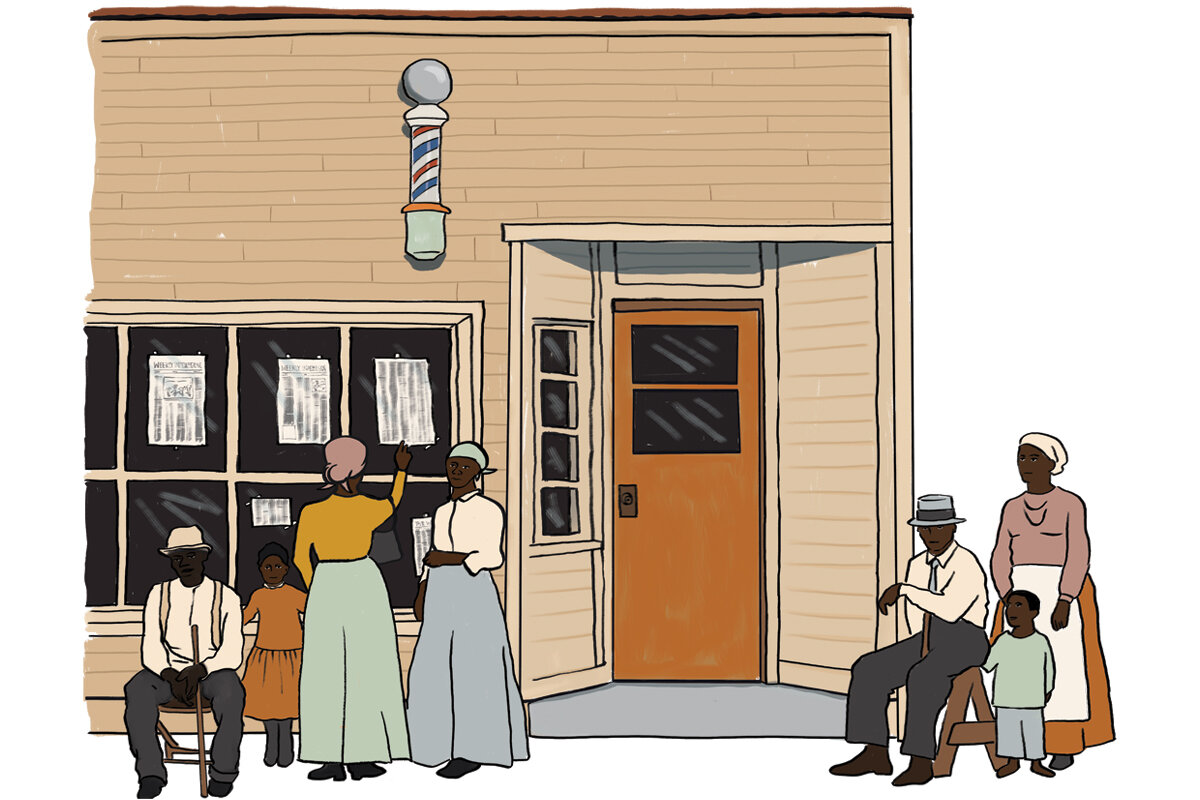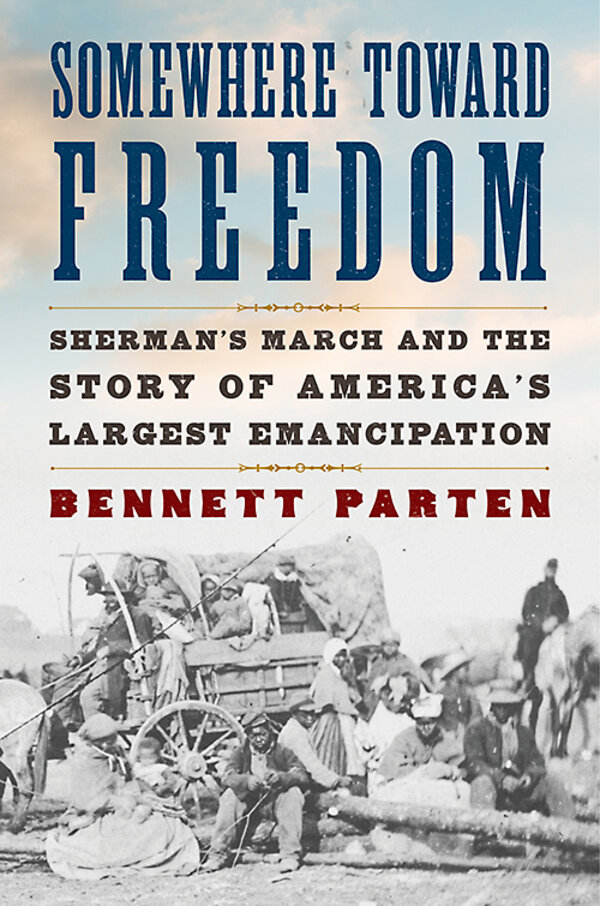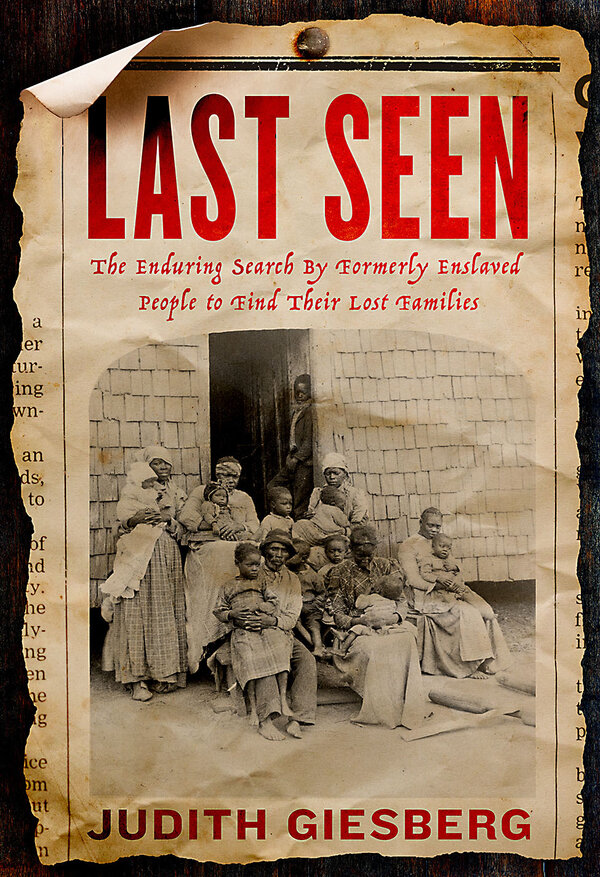The unfulfilled promises of emancipation and Reconstruction
Loading...
For those freed from bondage, the end of the Civil War was a time of great hope and promise as well as profound disappointment and loss. Two excellent new books focus on abolition’s complicated aftermath, foregrounding the experiences of the formerly enslaved.
Bennett Parten’s “Somewhere Toward Freedom: Sherman’s March and the Story of America’s Largest Emancipation” centers on Gen. William Tecumseh Sherman’s 1864 March to the Sea, which hamstrung the Confederacy toward the end of the war. In his original account, Parten, an assistant professor of history at Georgia Southern University, reframes the five-week military campaign as a liberation movement, focusing on the roughly 20,000 enslaved people who joined Sherman and his 60,000 Union troops on the arduous 300-mile journey from Atlanta to Savannah, Georgia.
Some of the refugees, Parten reports, followed the army because they were desperately hoping to find relatives who had been sold away from them in bondage. Separated families are the focus of Judith Giesberg’s affecting book, “Last Seen: The Enduring Search by Formerly Enslaved People To Find Their Lost Families.” Giesberg, a professor of history at Villanova University, is the founder and director of the Last Seen archive, which contains almost 5,000 advertisements placed by formerly enslaved women and men searching for parents, children, spouses, and siblings in the decades after the Civil War.
Why We Wrote This
Many Americans are moved by Abraham Lincoln’s 1863 Emancipation Proclamation, which dissolved the bonds of enslaved people. They may not know that the post-Civil War reality was more complicated.
Enslaved people who fled to the army during the war were at first considered contraband property with uncertain legal status. But in 1862, Congress declared that any slave with a rebellious master who reached federal lines would be free. President Abraham Lincoln’s Emancipation Proclamation, signed on New Year’s Day 1863, formalized the freedom of enslaved people who had escaped, encouraging the flow of men and women to Sherman’s army.
The march, Parten observes, “did in effect what the Emancipation Proclamation could do only on paper.” One of Sherman’s soldiers marveled that “Men, women, and children poured in from every direction.”
Sherman, whose devastating campaign is often cited as an early instance of a “total war” strategy, didn’t want the newly freed men and women trailing the army, but neither was he able to stop them. An opponent of Black enlistment, he put the men to work performing the unit’s menial tasks, such as constructing trenches or digging latrines. Others worked for officers as valets, while some women found roles as cooks and laundresses. Many of the newly freed men and women knew the terrain well and were able to offer strategic assistance or help the army forage for food.
But thousands of women, children, and older people – many hungry and some shoeless – trailed behind the troops, doing their best to keep up. They were vulnerable to attack by Confederate cavalry and vulnerable to violence from the Union side. Parten details the cruelty of Union Gen. Jefferson C. Davis (no relation to the president of the Confederacy), who was known to command soldiers to pull up bridges constructed to cross rivers and streams before the refugees had the chance to traverse them. His orders had tragic consequences at Ebenezer Creek, where hundreds drowned or were killed or reenslaved by Confederate cavalry on Dec. 9, 1864.
The end of Parten’s book details the period after the march, charting the possibilities of Reconstruction and the ways it fell short. In January 1865, Sherman, facing a refugee crisis in Savannah, issued Special Field Order No. 15. It allotted 400,000 acres of land between South Carolina and Florida to be divided into 40-acre plots for Black homesteaders (the source of the phrase “40 acres and a mule”). That vision did not become reality for most of the 40,000 Black people who settled the area, in part because Andrew Johnson, who assumed the presidency after Lincoln’s assassination, pardoned former Confederates and allowed them to reclaim their confiscated land.
Parten opens “Somewhere Toward Freedom” with the story of Sally and Ben, a formerly enslaved couple who joined Sherman’s march in hopes of finding their children. One daughter, Nan, had been sold south 10 years before, at the age of 8. As they approached Savannah, a friend told Sally that he’d heard someone address a woman as “Nan.” Sally ran to the young woman, and mother and daughter had a joyous reunion. A nearby soldier called it “the most powerful demonstration of human emotion” he’d ever witnessed.
“Last Seen” makes clear that such happy outcomes were exceedingly rare. Giesberg’s book begins with an overview of America’s domestic slave trade, which included the sale of 1 million enslaved people from the Upper South to the Deep South. A quarter of those, the author notes, were children between the ages of 8 and 15, and many of them were sold alone, without parents or siblings.
The years after the Civil War saw a rapid growth in Black newspapers, which regularly printed advertisements from freed people searching for their lost relatives. The ads were read aloud in Black churches and in barbershops, harnessing the power of what Giesberg describes as an elaborate Black grapevine.
Still, the odds were against those searching for family. Enslaved people might have been sold more than once, and their last names were often changed to match their owners’. Giesberg, speaking of the Last Seen collection, estimates that only about 2% of those who placed ads found the people they were looking for. She has done diligent research using census data and other sources, but she is candid about the fact that in most cases, it’s impossible to know how the searches ended.
The book’s 10 chapters each open with a reproduction of an original ad from the Last Seen archive and proceed to tell the story behind it. One chapter features Hagar Outlaw, who gave birth to nine children who were sold away from her one by one. Her ad, which noted that she was “growing old, and needs help,” resulted in reunions with three of her children.
Another chapter tells of Sandy Anderson, who was born in Texas after the Civil War. Over a period of eight years, he placed ads on behalf of several members of his extended family, including his mother, Lucy, who was sold away from her parents and siblings at age 9. “She told her story to her son Sandy when he was old enough to understand and he told it in the papers,” Giesberg writes. While Sandy’s efforts resulted in reunions for several of his relatives, his mother never located her kin.
Remarkably, Giesberg has discovered ads that were published as late as 1920, more than 50 years after the war. They reflect the abiding commitment of freed men and women “to the work of reconstituting their families even when the odds were long and the obstacles many,” she writes.
From the joy of reunion to the despair of never finding loved ones, from the jubilation surrounding emancipation to the failures of Reconstruction, these books capture the mixed legacies of the post-Civil War era in dramatic and compelling ways.







